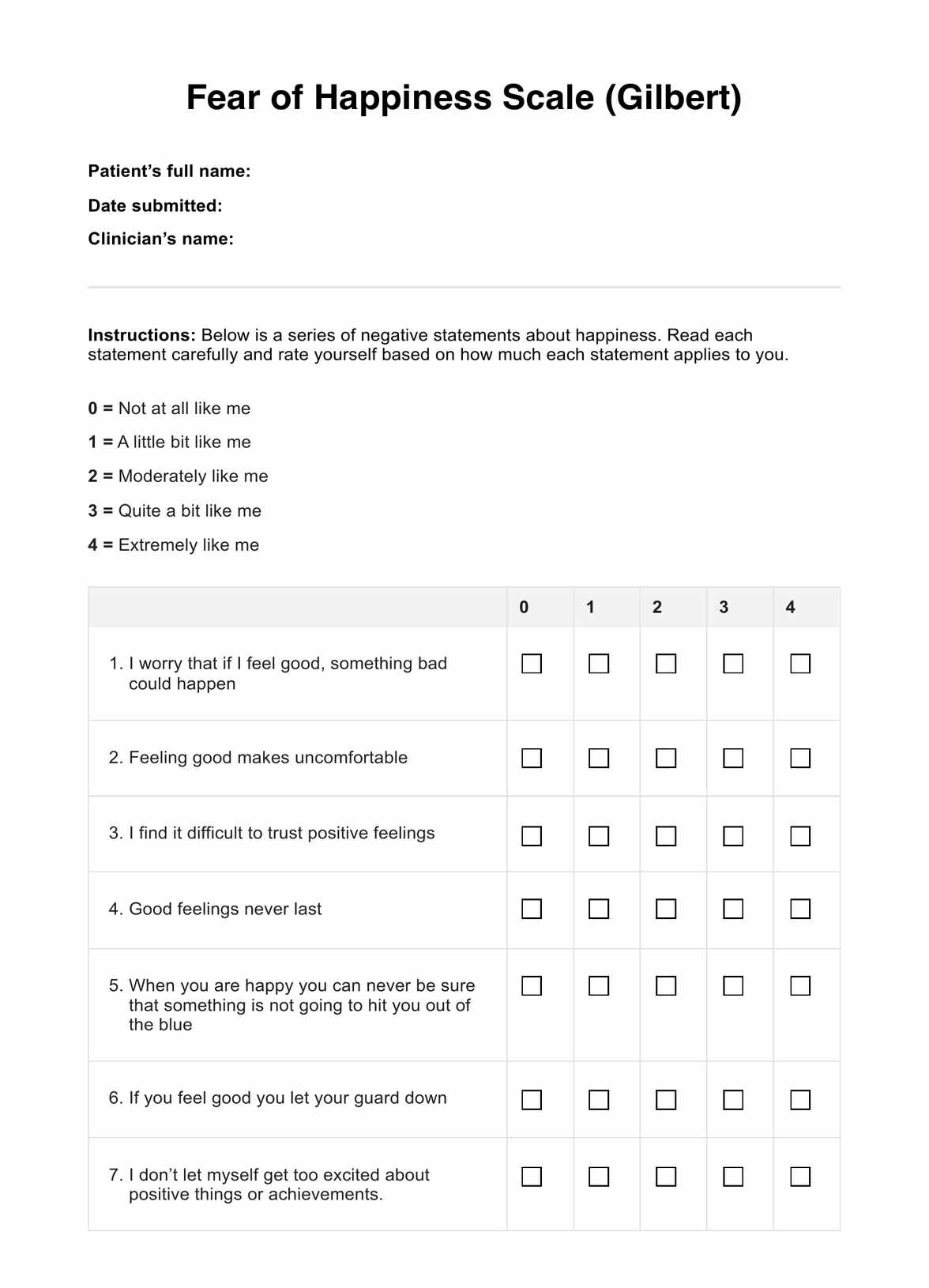The scale only has nine items, so it shouldn’t take more than five minutes.

Fear of Happiness Scale (Gilbert)
Gauge the severity of your patient’s fear of happiness using the Fear of Happiness Scale. Learn more about the scale through this guide!
Fear of Happiness Scale (Gilbert) Template
Commonly asked questions
The version by Joshanloo has five items, and the rating scale is between 1 to 7.
Yes, you may use the Fear of Happiness Scale to gauge the severity of your fear of happiness, but please don’t make any medical-related decisions or self-diagnose yourself with anything. Don’t even think this is a substitute for therapy. If your fear of and aversion to happiness negatively impacts your overall mental well-being, please seek help from a professional.
EHR and practice management software
Get started for free
*No credit card required
Free
$0/usd
Unlimited clients
Telehealth
1GB of storage
Client portal text
Automated billing and online payments











